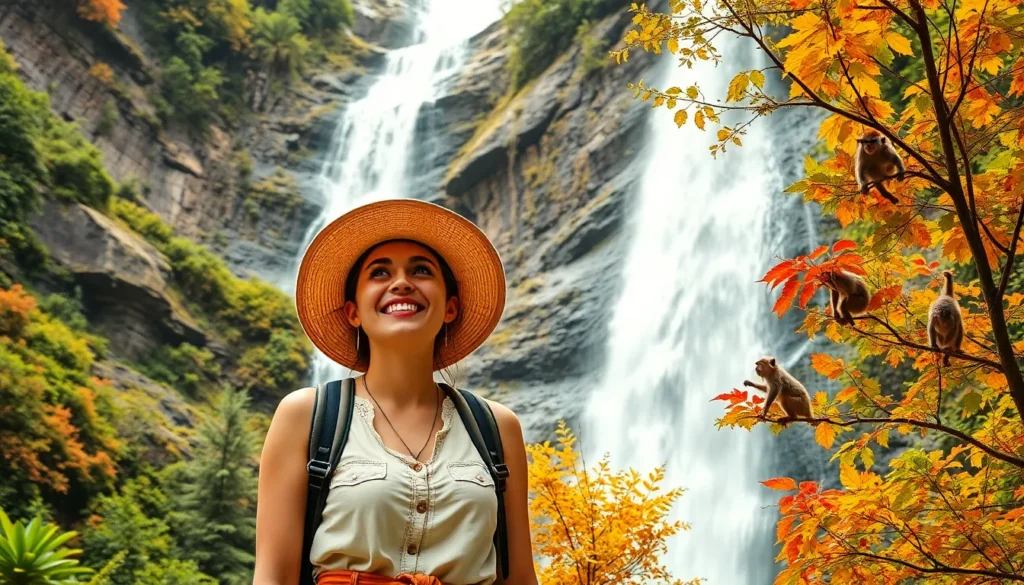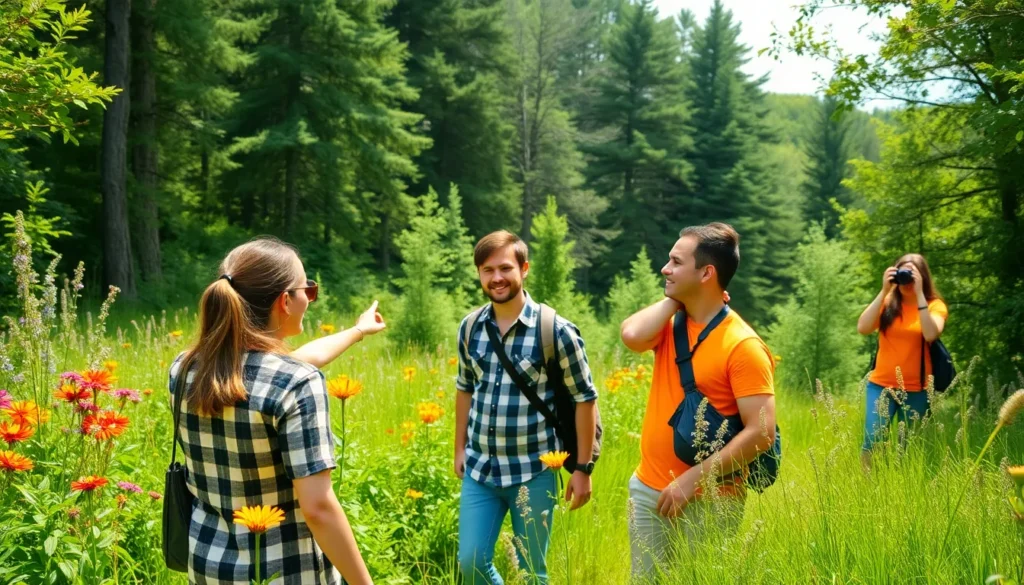Travel has always been a gateway to discovery, and historic journeys have shaped the world in profound ways. From ancient trade routes to epic pilgrimages, these paths tell stories of adventure, culture, and transformation. Each journey carries echoes of the past, inviting modern explorers to walk in the footsteps of those who came before.
As travelers seek deeper connections with history, they uncover the significance of these routes. Whether it’s the Silk Road’s vibrant exchanges or the Camino de Santiago’s spiritual quest, historic travel journeys offer more than just scenic views. They provide a chance to experience the rich tapestry of human experience and the enduring legacy of exploration.
Table of Contents
ToggleOverview of Historic Travel Journeys
Historic travel journeys offer unique opportunities for exploration and education. They encompass ancient trade routes, religious pilgrimages, and historic pathways that shaped civilizations. These routes, such as the Silk Road and the Camino de Santiago, invite modern travelers to engage with the cultural and historical narratives of the past.
Key Historic Routes
- Silk Road: This series of interconnected trade routes facilitated not only the exchange of goods but also the spread of ideas and cultures. The Silk Road connected China to Europe, impacting civilizations across Asia and beyond.
- Camino de Santiago: As a famous pilgrimage route in Spain, this journey brings together diverse cultures and individuals seeking spiritual enrichment. The Camino’s historical significance stems from centuries of pilgrims, contributing to its enduring appeal.
- Inca Trail: This ancient pathway leads to the renowned Machu Picchu, showcasing the engineering prowess of the Inca civilization. It serves as a testament to their ability to navigate challenging terrains while connecting communities.
- Roman Roads: These meticulously constructed roads linked the vast Roman Empire, facilitating military movement, trade, and communication. Some sections of these roads still exist, providing insight into Roman engineering and society.
Benefits of Historic Travel
- Cultural Understanding: Engaging with historic journeys enhances appreciation for different cultures and histories, fostering empathy and understanding.
- Personal Connection: Travelers experience a direct link to the past, creating meaningful reflections on history and humanity.
- Adventure: Historic trails often traverse stunning landscapes, combining natural beauty with rich cultural experiences.
Conclusion
Historic travel journeys play a vital role in fostering connections between travelers and the past. Engaging with these routes enriches individual experiences, promoting a deeper understanding of history and human connections.
Iconic Routes in History

Historic travel journeys allow exploration of unique routes that have shaped human history. They connect modern travelers with rich legacies and diverse cultures through ancient paths.
The Silk Road
The Silk Road, an extensive trade route, spanned over 4,000 miles, linking China with Europe. It facilitated not only commercial exchange but also cultural interaction and the spread of ideas. Various goods, including silk, spices, and precious stones, traversed this route, fostering economic growth across continents. Major cities along the Silk Road, such as Samarkand and Bukhara, became cultural melting pots, showcasing diverse religions, languages, and traditions. Travelers can still explore remnants of this historic route, discovering ancient caravanserais and vibrant markets that tell stories of commerce and connection.
The Inca Trail
The Inca Trail stretches approximately 26 miles and leads trekkers into the heart of the Andes to Machu Picchu. This ancient pathway showcases remarkable Inca engineering, including stone steps and agricultural terraces. Travelers experience breathtaking landscapes, from lush cloud forests to high mountain passes. The Inca Trail serves as a spiritual journey, with many hikers reflecting on their connection to nature and ancient civilization. Guided treks often include insights into the history of the Inca Empire, enhancing the significance of the journey and enriching the travel experience.
Influential Figures in Travel History
Travel history features numerous figures who have significantly shaped the understanding of exploration and the experience of journeying. These individuals have expanded horizons, created pathways for adventure, and inspired generations of travelers.
Explorers and Adventurers
Explorers and adventurers revolutionized travel with their daring voyages.
- Marco Polo: This Venetian merchant journeyed through Asia in the late 13th century, documenting experiences in “The Travels of Marco Polo.” His accounts introduced Europeans to Asian cultures and goods.
- Christopher Columbus: Known for his 1492 voyage, Columbus aimed to find a westward route to Asia, ultimately opening the Americas to European exploration.
- Ferdinand Magellan: Leading the first expedition to circumnavigate the globe, Magellan’s 1519 journey altered perceptions of the world, demonstrating its vastness and interconnectedness.
- David Livingstone: This Scottish missionary and explorer traveled through Africa in the 19th century, promoting humanitarian work and recording vital geographical data.
Each of these figures left an indelible imprint on the travel narrative and encouraged subsequent adventurers to follow in their footsteps.
Writers and Their Influence
Writers have chronicled journeys while inspiring others to explore.
- Herman Melville: In “Moby-Dick,” Melville presented the vastness of the seas and encouraged a curiosity for oceanic travel.
- Mark Twain: His travel writings, particularly “The Innocents Abroad,” provided humorous insights into international journeys and the American experience abroad.
- Paul Theroux: Famed for his travel narratives, Theroux’s works such as “The Great Railway Bazaar” served to entice readers with vivid descriptions of remote places, evoking a sense of wanderlust.
- Bruce Chatwin: A pioneer of modern travel writing, Chatwin’s books, including “In Patagonia,” blurred the lines between travel and fiction, enriching literary landscapes and attracting adventure seekers.
Writers influence perceptions of travel, highlighting cultural encounters and elevating the importance of exploration in everyday life.
The Impact of Technology on Travel
Technology has profoundly influenced travel, altering how individuals explore historic routes and engage with cultures. Innovations in transportation and communication have streamlined the journey, making it more accessible and immersive.
Innovations in Transportation
Railways, automobiles, and airplanes transformed travel. Railways emerged in the 19th century, drastically reducing travel time across continents. High-speed trains, like Japan’s Shinkansen, cover distances once requiring days in mere hours. Automobiles provided flexibility, allowing travelers to access remote sites, including landmarks along historic routes.
Air travel revolutionized long-distance exploration. Flights connect multiple countries in a matter of hours, facilitating visits to iconic sites within days. For instance, passengers can journey from New York City to Rome in about eight hours, making historic landmarks easily reachable. Emerging technologies, such as electric and autonomous vehicles, offer sustainable travel options while improving safety and comfort.
The Role of Communication
Communication technology has enhanced how travelers plan and share experiences. The internet enables research on historic routes, providing information on itineraries, accommodations, and local customs. Travel apps simplify navigation and enhance cultural engagement through real-time translation and recommendations.
Social media platforms connect travelers, allowing them to share experiences and photos instantly. Hashtags related to historic journeys cultivate communities around shared interests, encouraging cultural exchange. Moreover, virtual reality (VR) experiences offer immersive previews of destinations, enriching travelers’ understanding before they embark on journeys.
Together, these advancements in transportation and communication reshape travel, enhancing the connection to historic journeys and fostering deeper cultural appreciation.
Exploring historic travel journeys offers a unique opportunity to connect with the past and appreciate the rich tapestry of human experience. By traversing ancient routes like the Silk Road and the Camino de Santiago, travelers immerse themselves in stories that have shaped cultures and societies.
These journeys not only enhance personal understanding but also foster a sense of adventure through breathtaking landscapes. As technology continues to evolve, the way individuals engage with these historic paths becomes more accessible, allowing for deeper connections to the cultures and histories they encounter. Embracing these experiences can lead to a greater appreciation for the shared heritage of humanity.









